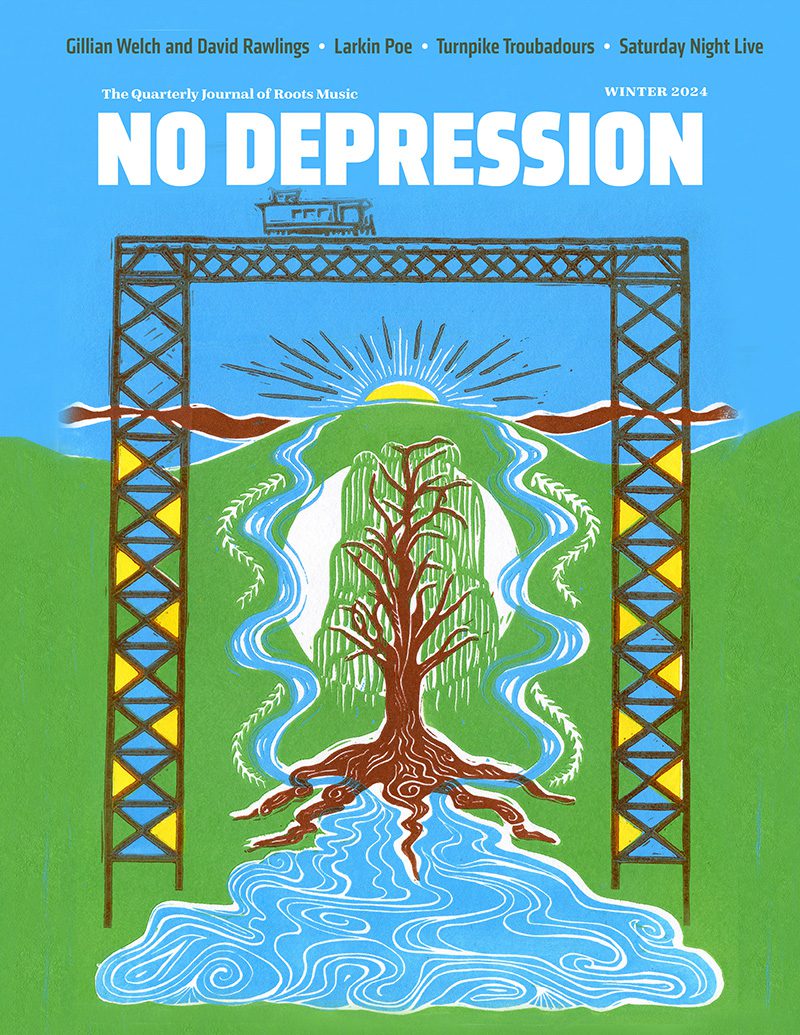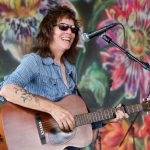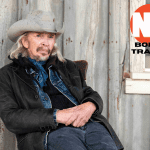Ryman Ode
I have got to the point where I can’t walk past it without touching one of its bricks. If I’m within two blocks, I have to take a detour.. It could be worse, as strange customs go (I won’t use the term ‘obsession’ against me). I could want to touch just the SAME brick, now that’d be freaky, eh?
Here I am in Melbourne Australia. It’s mid-January 2015. Still early summer. The sun is hot but the nights are fresh. It’s cool tonight. I’m listening (loudly!) to the magnificent double CD of Tennessean music from the Oxford American magazine’s Southern Music CD. Tears are welling in my eyes, thinking about Tennessee, Nashville, and the Ryman Auditorium.
I feel close to the Ryman, even though it’s over 9,000 miles away as the crow flies. It’s in the heart of downtown Nashville, located just above Broadway and between 4th and 5th South Streets. My Ryman romance (let’s shorten it to RR shall we?) began slowly and impossibly, like the best romances do. A visit to Nashville in 2008, a self-guided tour, and a show with comedian, host and commentator Jon Stewart.
Second contact, a year later, a Patsy Cline tribute show.
Third contact, in 2013, things are getting serious. The Americana Honors and Awards show is on the next day, we head into rehearsals and see Dr John, Dan Auerbach (The Black Keys), Buddy Miller, and Stephen Stills. The Awards Show the next night at the same venue is the best music event I’ve attended.
But wait, there’s more! Here’s where I lost it.
A second trip to the Americana festival and a fourth embrace of Nashville happened in 2014. Leftover Salmon were revisiting a classic alt-country/Americana album of theirs with special guests, and put on a show at the packed Ryman, which was full of warmth and love. They got a standing ovation before the first song even started.
Two nights later, and the Americana Awards show even surpassed the year before. Jackson Browne, Loretta Lynn, Robert Plant, Jim Lauderdale, Ry Cooder, Buddy Miller, Patty Griffin, Rosanne Cash, Jason Isbell, Hurray For The Riff Raff, Sturgill Simpson, St Paul & The Broken Bones, Hard Working Americans, Sarah Jarosz, Robert Ellis, Milk Carton Kids… and that’s just off the top of my head.
That’s when the brick thing started.
What’s all the fuss about one building, I hear you ask? Well, here’s a bit of information that might provide a little historical context.
In the 1880s, prominent businessman and steamboat captain Thomas G. Ryman found salvation in the words of fiery evangelist Reverend Sam Jones and vowed to build a great tabernacle that would project Rev. Jones’s voice clearly and powerfully for all to hear. Designed by architect Hugh Cathcart Thompson in the Late Victorian Gothic Revival style popular at the time, Tom Ryman’s vision became a reality with the completion of the Union Gospel Tabernacle in 1892. After his death in 1904, the Union Gospel Tabernacle became known as the Ryman Auditorium in honor of the man who built the Nashville landmark.
As the largest structure in the area, the Ryman Auditorium soon became a popular place for community events, political rallies and popular turn-of the-century entertainment including operas, symphonies, bands, ballets and theatrical productions. John Philip Sousa, Enrico Caruso, Ethel Barrymore, Roy Rogers, Harry Houdini, Charlie Chaplin, W.C. Fields, Katharine Hepburn, Bob Hope, Mae West and even president Theodore Roosevelt all graced the Ryman stage.
While the Ryman was gaining recognition as an entertainment site, George D. Hay was creating a radio show that would become an international phenomenon – the Grand Ole Opry. In 1943, with crowds too big and too rowdy for other Nashville venues, the Opry found a home at the Ryman. For the next thirty-one years, the Ryman served as the premier stage for the Opry’s live radio shows, which included such legends as Elvis Presley, Hank Williams, Johnny Cash, Marty Robbins, Minnie Pearl, Patsy Cline and Roy Acuff.
As the home of the Grand Ole Opry, the Ryman became inseparably linked to the origins and rise of the modern-day genre of country music. Dubbed “The Mother Church of Country Music” by Nashvillians, it’s well known by this moniker today. The Ryman’s famous stage is also known as the birthplace of Bluegrass. On December 8 1945, the definitive sound of Bluegrass was born when a twenty-one year old Earl Scruggs joined Bill Monroe on stage for the first time. The State of Tennessee has officially recognized the Ryman as the Birthplace of Bluegrass.
When the Opry moved to its new location in 1974, the Ryman continued to attract fans from around the world merely to step on the stage that had attracted so many greats. In 1994, an $8.5 million renovation project brought this National Historic Landmark back to its original splendor. Each of the original wooden pews was refinished. The stenciled artwork on the face of the balcony was painstakingly recreated. For the first time, proper dressing rooms were added which would ultimately be dedicated to the stars of the Ryman’s rich musical past. The latest technology in sound, lighting and engineering was included throughout every phase of the project. Central heat and air conditioning were added for the first time as well as a 14,000 square foot support building for ticketing, offices, concessions and a gift shop. The result was a state-of-the-art performance hall praised by performers for its beauty and, most importantly, for its acoustics.
Since the renovation, the Ryman has hosted world-class performers ranging from Aretha Franklin to the Zac Brown Band and from Annie Lennox to ZZ Top. In addition to being a favorite stop for touring concerts, the Ryman continues to be a popular location for television and film productions. Many artists have also taken advantage of the Ryman’s superior acoustics to make live audio recordings including Earl Scruggs, Jonny Lang, Josh Turner, Levon Helm, Marty Stuart and Robert Earl Keen.
The Ryman was named the Pollstar’s 2010, 2011, 2012 and 2013 Theatre of the Year, an award voted on by peers and widely regarded as the most prestigious in the concert industry.
The Ryman’s acoustics, built to project the voice of Sam Jones so long ago, are among the finest in the world. Word has it that the Ryman is one of three of the best acoustic venues in the USA (New York’s Carnegie Hall and the Mormon Tabernacle in Salt Lake City Utah being the other two).
I’m going back to Nashville next year, again for the wonderful Americana Music Festival. The first night in Music City for me and friends will be 13 September 2015. I reckon I will be touching a brick sometime on 14 September.
I’m getting a little misty eyed just at the thought.
Rob Dickens
Source of historical material: www.ryman.com




